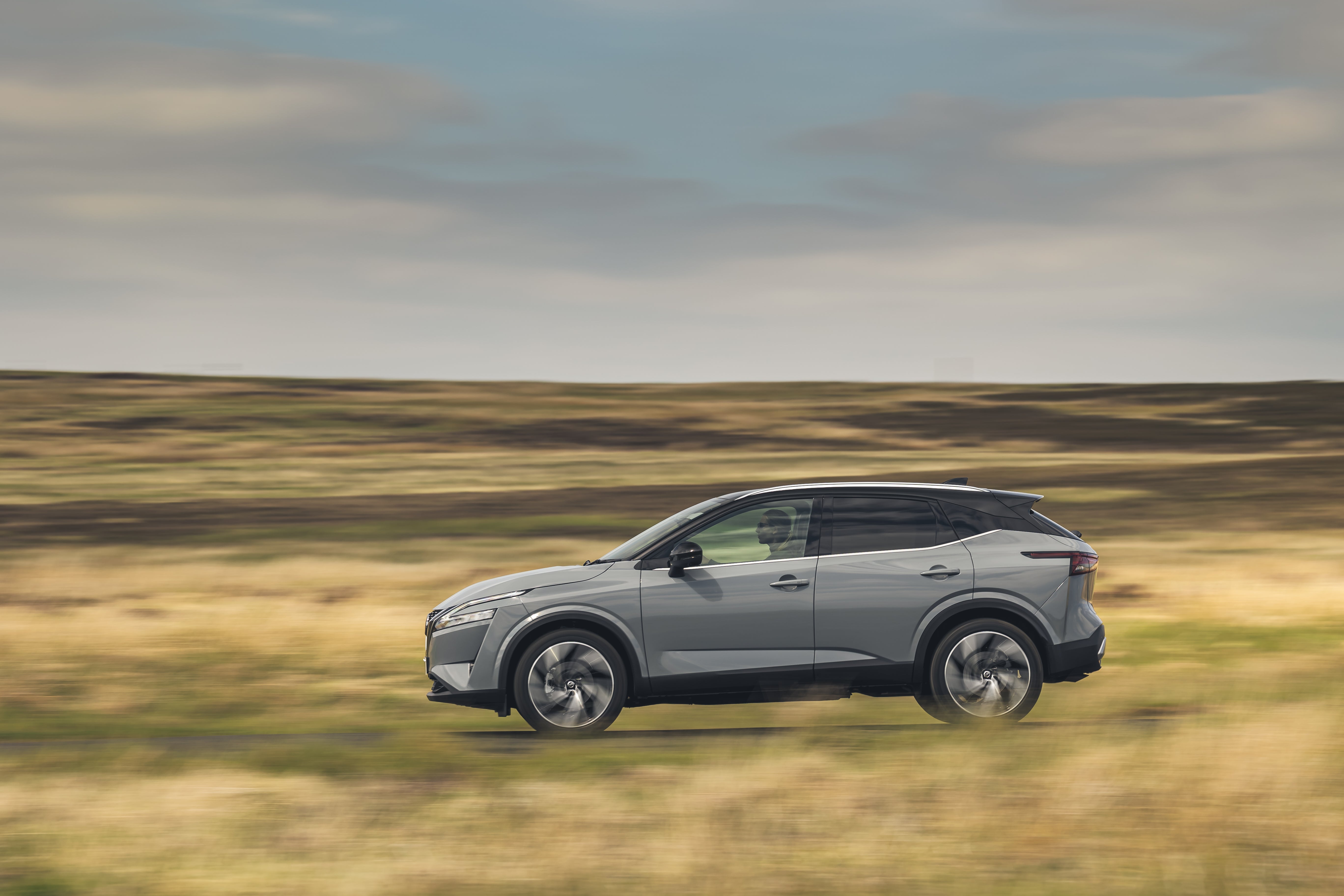Nissan Qashqai: Modernised rather than revolutionised
The best news is that the automatic transmission is a vast improvement on the previous whining, unresponsive set-up, writes Sean O’Grady

Did you know that one in five of all the cars made in Britain over the past 15 years or so was a Nissan Qashqai? There’s a good reason for that, which is that back in 2007 Nissan unexpectedly (for such an historically conservative company) invented a new “genre” of vehicle – the “crossover”, a hybrid of the SUV and the family hatchback. The aim was to take the best from each parent, and blend a combination of practicality, high driving position and economy in one compact package, with some Japanese-inspired reliability thrown in. Built with pride in Sunderland, the new car was a huge success with some 3 million produced so far. What is more remarkable is that having spawned about 30 competitors – VW T-Roc, Kia Sportage, Seat Arona, Peugeot 3008, Mercedes-Benz GLA, Ford Kuga, MG ZS, Volvo XC40 etc etc etc – it remains the market leader, at least in Britain.
THE SPEC
Nissan Qashqai Tekna+ Auto 158PS
Price: £37,270 (range starts at £23,535)
Engine capacity: 1.3 litre petrol 4-cyl, CVT auto
Power output (PS): 158
Top speed (mph): 124
0 to 60 (seconds): 9.2
Fuel economy (mpg): 43.8
CO2 emissions (g/km): 124
With the launch of an all-new third generation model there is every sign it will stay that way. It is a vitally important model for the British motor industry, and all the more so in the aftermath of Brexit and Covid. The look is modernised rather than revolutionised, with a “floating roof” effect and bigger, bolder grille, and the interior is rather a sombre affair – no wacky customisation options, and nothing to scare the loyal customer base. I’m happy to report that the formidable mix of capabilities is still there, and it deserves to do well.
There’s quite a choice of trim levels and option across the range, and the Tekna+ with the automatic box is about the pick, but all the new Qashqais share a 1.3 litre petrol engine in “mild hybrid” form, so supplemented with a small battery pack and electric motor to assist with smoother power delivery, better fuel economy and lower emissions. For now it is front-wheel drive only, with a proper four-wheel drive option arriving later. There’s no diesel, no sign of a plug-in hybrid, and an all-electric version hasn’t been ruled out. They’ve used more composite plastics, aluminium and high-tensile steel in the design, which takes about 60 kg off its weight (it’s still a tonne and a half, mind), with improved handling and economy over its predecessor. The best news is that the automatic transmission (accounting for about a half of sales) is a vast improvement on the previous whining, unresponsive set-up. In the six-speed manual and in the automatic the Qashqai is best driven in its “sport” mode, with the economy setting as a last resort if you’re running out of fuel. The engine’s slight deficit in torque, even with the electric motor on tap, is one of its few flaws.
Even so, it’s refined and impressively well damped to cope with the worst of our road surfaces, and families will appreciate the clever boot design, with a maximum capacity of 504 litres, large enough to move a move a tall bookcase. You can adjust the boot’s height, and flip the carpeted floor over to reveal a washable plastic back if you’re moving, say, muddy boots. The floor can also be rearranged to create a vertical ledge, making it easier to stack shopping bags, and of course there are a couple of hooks on the sides to hang a takeaway curry from. It’s what families want these days, according to Nissan. I especially like the way you can open the tailgate with your hands full by waving your foot under the back bumper. The back doors open almost at a right angle, so it’s even better for getting a child and child seat in, or for someone with mobility problems.
There’s also lots of new tech, such as enhanced ProPilot cruise control, autonomous driving aids (eg reading speed limit signs for you) and full Apple and Android connectivity, but the Qashqai hasn’t joined the fashion for everything being controlled via a touch screen, so there’s some traditional dials for the air conditioning and audio), and well-designed buttons on the steering wheel. It’s probably safer that way, too.
It’s a tough market out there, and one of the biggest threats to mainstream manufacturers such as Nissan is the incursion of the big three German brands into the the mid-market, accelerated by affordable monthly PCP or PCH schemes that blur the price premium. On first impressions, Nissan have answered that and upped the Qashqai’s game in the quality of the materials used in the cabin, with soft leathers predominating on the higher-spec models. In terms of durability and reliability there’s no reason to doubt that the Qashqai will give much away to an Audi or a BMW, and the only answer to snob appeal is to build a better car. So, with 3 million already out there, Nissan have built the best Qashqai yet. Like the Ford Cortina, Mondeo and VW Golf before it, it’s a landmark design, and similarly enduring. Indeed it’s now symbolic of a certain slice of “middle Britain”. More to the point, it’s probably (still) the best crossover in the world.
Subscribe to Independent Premium to bookmark this article
Want to bookmark your favourite articles and stories to read or reference later? Start your Independent Premium subscription today.

Join our commenting forum
Join thought-provoking conversations, follow other Independent readers and see their replies